-
TrackoBit
Manage commercial vehicles with the new-age Fleet Management Software
TrackoBit -
TrackoField
Streamline your scattered workforce with Field Force Management Software
TrackoField -
Features Resources
-
Blog
Carefully curated articles to update you on industrial trends. -
White Paper
Insightful papers and analysis on essential subject matters. -
Glossary
Explore an alphabetical list of relevant industry terms. -
What’s New
Get TrackoBit & TrackoField monthly updates here. -
Case Study
Explore the cases we solved with our diverse solutions. -
Comparisons
Compare platforms, features, and pricing to find your best fit.
-
About Us
Get to know TrackoBit: our team, ethos, values, and vision. -
Careers
Join the most dynamic cult of coders, creatives and changemakers. -
Tech Support
Learn about our technical support team and services in detail. -
Events
Check out the exhibitions where we left our marks and conquered. -
Contact Us
Connect with us and let us know how we can be of service.
Top 6 Green Fleet Technologies for Sustainable EV Fleet
- Author:Nandita Gupta
- Read Time:7 min
- Published:
- Last Update: December 9, 2025
Table of Contents
Toggle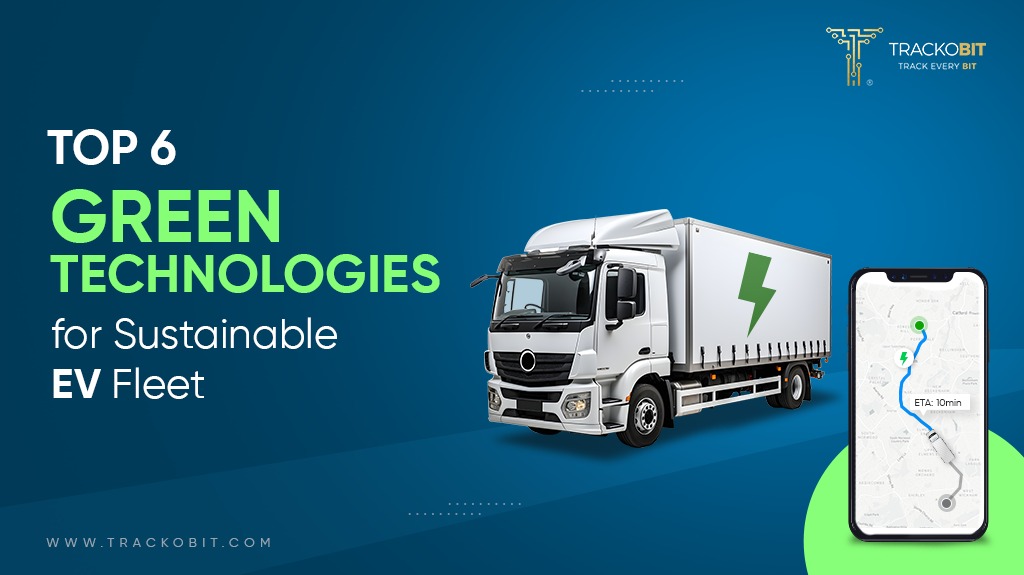
Explore which 6 technologies for a sustainable EV fleet to expect next for a carbon-neutral nation. How sustainable EV Fleet management is the need of the hour!
Table of Contents
Toggle
“To decarbonise the transportation sector by 2030 with the introduction of a more sustainable eletric vehicle fleet” — that’s what India has pledged. By 2030, there will probably be 45-50 million EVs globally. This strong move was planned as an aftermath of 40% of air pollution led by vehicle tailpipe emissions.
Around 6 million vehicles on the roads, including commercial fleets (cars, trucks, and vans) will be seeing mass EV adoption at a speed. Who knows by the time we are reading this, new EV fleets might have entered the market, govt. may have set up charging infrastructure or brought some game-changing EV policies.
As we are approaching 2030, the electric vehicle market is blaring ahead with some interesting trends to contribute to a greener and cleaner future. Let’s look at those 6 trends ahead.
“Electric Vehicles on Rise” – Why Are They So Hyped?
Do you know the global commercial vehicle fleet market is expected to be worth 2.155.1 thousand units by 2030 (growing at a CAGR of 22.5%? — quite fast. Depleting fossil fuels and environmental concerns are driving the adoption of sustainable electric vehicles.
The rise of electric vehicles is evident because:
- It produces zero tailpipe emissions.
- Reduces air pollution (less nitrogen oxides (NOx) and particulate matter).
- Leads to improved air quality.
Additionally, EVs contribute to less overall emissions throughout their entire lifecycle compared to traditional internal combustion engine (ICE) vehicles.
Sustainable EV fleets are a strategic initiative by organizations and governments to transition their transportation systems to electric vehicles. These fleets can encompass a wide range of vehicles, from passenger cars and delivery vans to public transit buses and heavy-duty trucks.
The primary goal is to reduce the carbon footprint of the fleet while maintaining efficient and reliable transportation services.
Top 6 Green Technologies Driving Sustainable Electric Vehicle Fleets (EV Fleet)
-
Electric Powertrains
Do you know the Electric Powertrain Market size is estimated to grow at 27% CAGR from 2022 to 2030?
The electric powertrain is considered the heart of electric vehicles. They replace conventional gasoline or diesel engines. These powertrains are proven to be highly efficient. They work by converting electrical energy to motion — leading to less energy loss.
The electric powertrains in EVs offer:
- Instant torque, which helps provide quick acceleration and responsive performance.
- EVs recover energy during braking through regenerative braking systems. As a result, it increases the vehicle’s range and reduces the risks of any wear on the braking parts.
-
Battery Technology
In 2022, there was a 60% demand for lithium, 30% for cobalt, and 10% for nickel for EV batteries.
Lithium-ion batteries have become the standard for EV fleets. After all, they offer improved energy, density, and range coverage. Research is underway to develop even more high-range, efficient, and sustainable battery chemistries.
| 💡 There are 2,976 lithium-ion battery cells in a Tesla. Woah! |
-
Readily Available Charging Infrastructure
In March 2023, Delhi was found to have the largest number of public electric vehicle charging stations in India, approximately 1.9 thousand stations. Following Delhi was Karnataka with 704 stations.
To support sustainable EV fleets, having high-quality, readily available EV charging infrastructure is crucial. Fast-charging stations are set up along highways and in urban areas, to meet India’s goal of electrifying the transportation sector by 2023. To meet this goal, India would need approx. 46,000 charging stations.
Current Scenario of EV Charging Infrastructure PAN India:
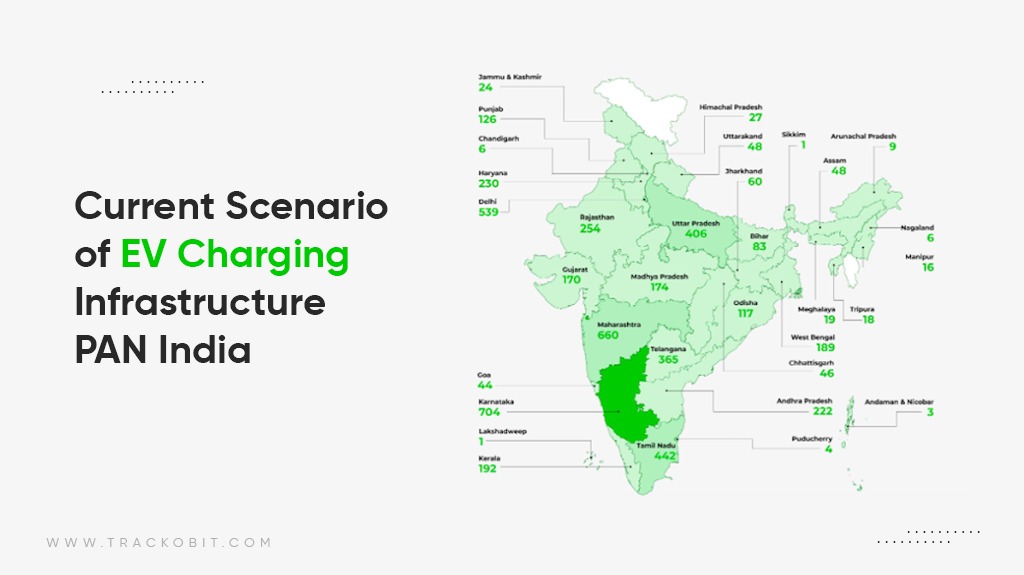
-
Integrating Renewable Energy Sources
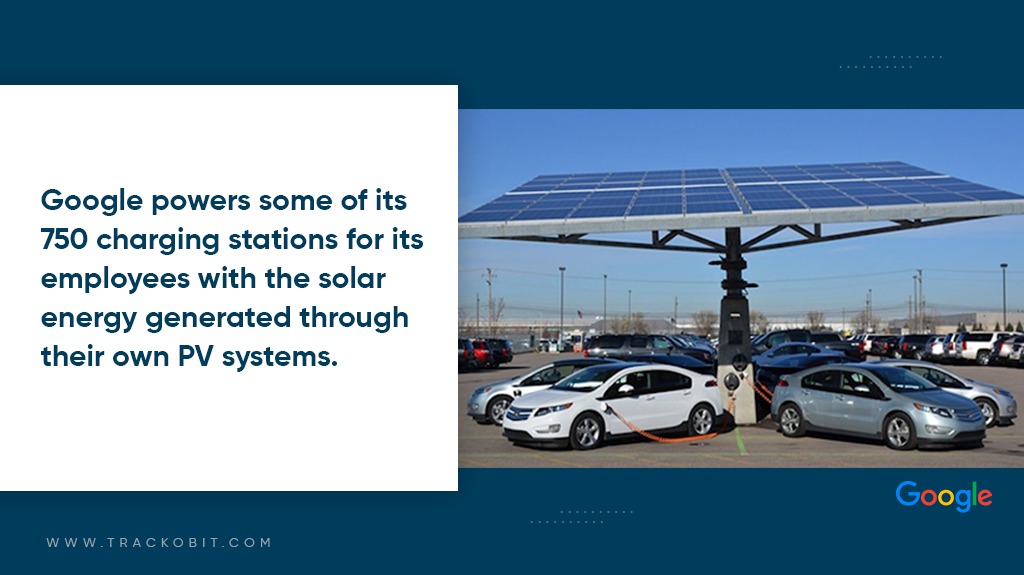
Many organizations are focused on incorporating renewable energy sources across their charging infrastructure. This step is being done to further reduce carbon emissions. Many enterprises are opting for solar panels and wind turbines to power their charging stations; to make the entire process carbon-neutral.
Largely, private organisations are installing solar photovoltaic (PV) canopies to power their charging stations.
🔍EVgo, a national fast charging network company has already announced its plans to power its EV charging network with 100% wind or solar energy. Great move!
-
Smart Grids and Vehicle-to-Grid (V2G) Technology
Smart grids V2G help maintain bidirectional energy flow between EVs and the electric grid. This means that EV fleets not only draw energy from the grid but also supply back excess; which reduces strain during peak demand times.
In coming times, V2G technology can potentially help reduce peak demand while maintaining the grid’s stability. And could develop into a new stream of revenue options for EV owners (woah, show me the money). Many countries and companies are already investing in the development and deployment of V2G systems.
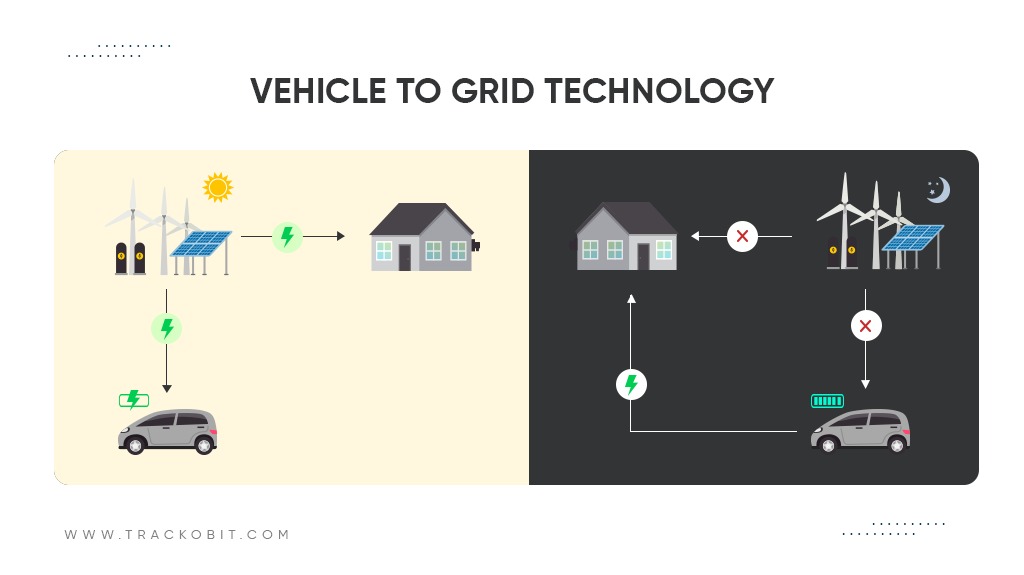
-
EV Telematics and Fleet Management Systems
On one hand, the government is going in a full circle to decarbonise the transportation sector, to support in parallel, players providing EV telematics and fleet management systems will emerge as a necessity.
While the fleet industry will be moving ahead from gasoline and diesel-powered vehicles and turn up as early adopters of green and clean transportation, it is clear that telematics companies will play a major role in supporting future sustainability goals.
In 2024, fleet managers transitioning to EV fleets need to continue looking for AI-powered EV fleet management solutions that let them:
- Optimise their EV fleets by monitoring vehicle performance in real-time.
- Plan routes and manage charging schedules to reduce downtime.
- Monitor driver and engine performance to increase fleet efficiency and cut down CO2. emissions.

Why is it Time to Transition to EV Fleets? Advantages of Electric Fleet Vehicles!
With a sustainable electric vehicle fleet, you will enjoy uncanny benefits. Way better than you experience with costly traditional fuelled vehicles.
| Reduced Carbon Emissions (Yes, more greens) | The rise in sustainable EV fleets will cause a substantial reduction in greenhouse gas emissions, helping fight the odds of climate change. |
| Improved Air Quality (sigh of healthy breath) | Electric vehicles produce no tailpipe emissions, improving air quality in urban areas and reducing health risks associated with air pollution. |
| Lower Operating Costs (Save approx. 50% on maintenance cost) | EVs have lower operating and maintenance costs compared to traditional vehicles, saving organizations money in the long run. |
| Energy Independence | Transitioning to electric vehicles reduces dependence on fossil fuels, increasing energy security. |
| Job Opportunities | The shift toward sustainable electric vehicle fleets will drive innovation in green technology and create new job opportunities in the electric vehicle and renewable energy sectors. |
Final Thoughts!
It’s a must to note that the choice between electric and diesel powertrains is highly dependent on specific use cases, infrastructure, and regional energy sources.
While electric powertrains and technologies are advantageous, there are times when diesel engines might outperform them. Hello, heavy-duty long-haul applications. However, the government is steering towards sustainable EV fleets because they are economical and less taxing to the environment.
Sustainable EV fleets are a staircase to a greener, cleaner, and more sustainable future. With the integration of top green technologies like electric powertrains, advanced batteries, renewable energy sources, and smart power grids, organizations and governments are only aimed at decarbonising the transportation sector by 2030.
As these technologies continue to disrupt, it’s time for logistics and delivery businesses to bring a balanced amount of sustainable electric vehicle fleets too.
Nandita is the Team Lead for Content Marketing at TrackoBit, bringing over a decade of experience in B2B, B2C, and IoT sectors. She has a proven track record of helping Read More
Related Blogs
-
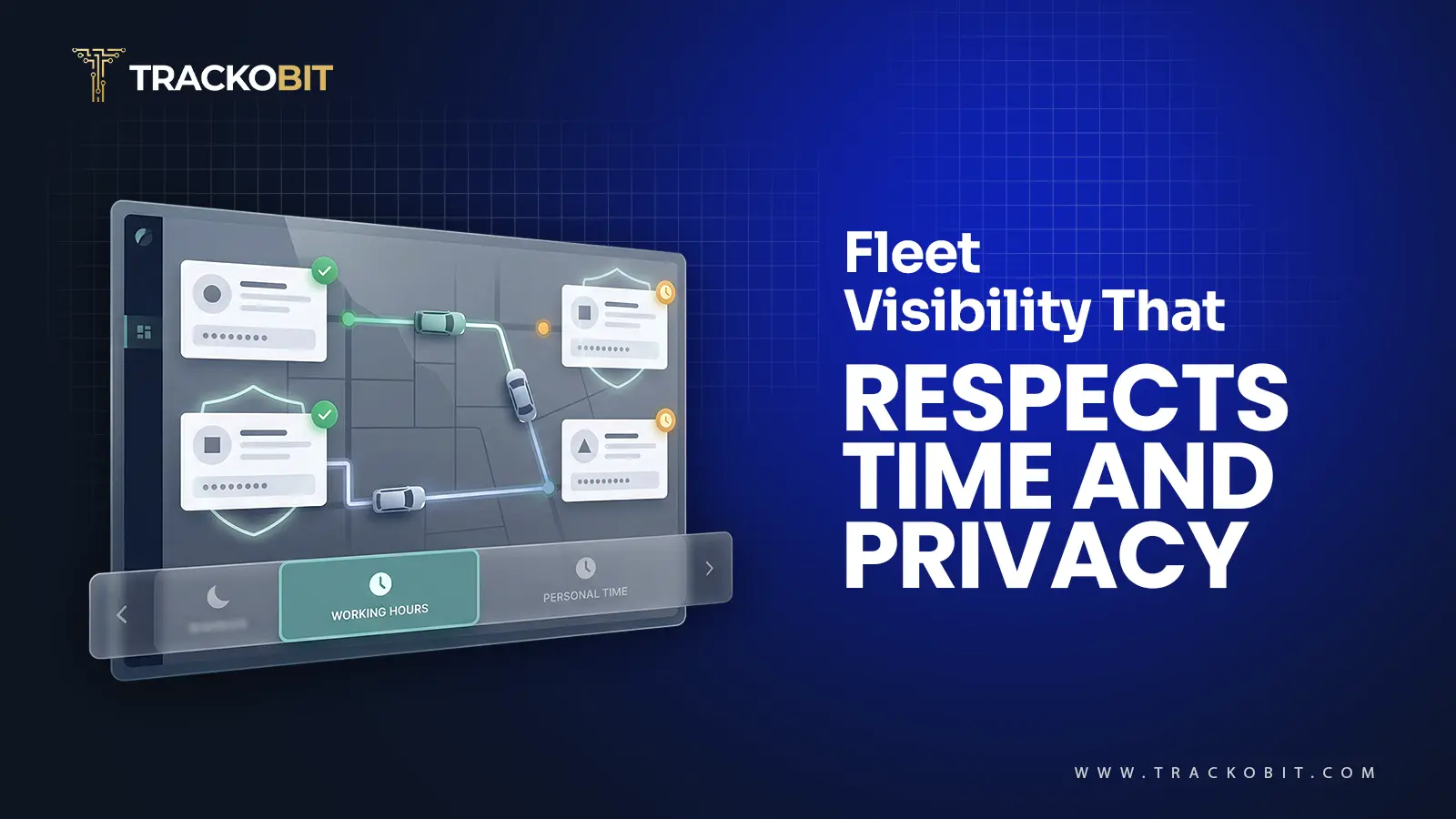
When Tracking Needs a Clock: Rethinking Fleet Visibility
Tithi Agarwal December 24, 2025Read on to understand why fleet tracking works better when it follows working hours. Because visibility should support operations, not…
-

What Makes TrackoBit’s Video Telematics Software Truly Next-Gen?
Shemanti Ghosh December 17, 2025TrackoBit’s video telematics software blends smart video intelligence with full server control. The result? Superior fleet reliability and safety.
-

Plug, Pair, Perform TrackoBit Introduces BLE Sensor Integration
Tithi Agarwal November 26, 2025TrackoBit’s BLE Sensor Integration enables wireless, real-time monitoring with faster installs and accurate insights. It improves fleet efficiency, visibility, and…
-

How to Use Driver Behavior Reports as a Sales Hook to Close Big Fleets
Tithi Agarwal October 16, 2025TrackoBit’s driver behavior reports empower fleet providers to win big contracts by showcasing safety, efficiency, and measurable ROI.

Subscribe for weekly tips to optimize your fleet’s potential!
Your inbox awaits a welcome email. Stay tuned for the latest blog updates & expert insights.
"While you're here, dive into some more reads or grab quick bites from our social platforms!"Stay Updated on tech, telematics and mobility. Don't miss out on the latest in the industry.
We use cookies to enhance and personalize your browsing experience. By continuing to use our website, you agree to our Privacy Policy.


































